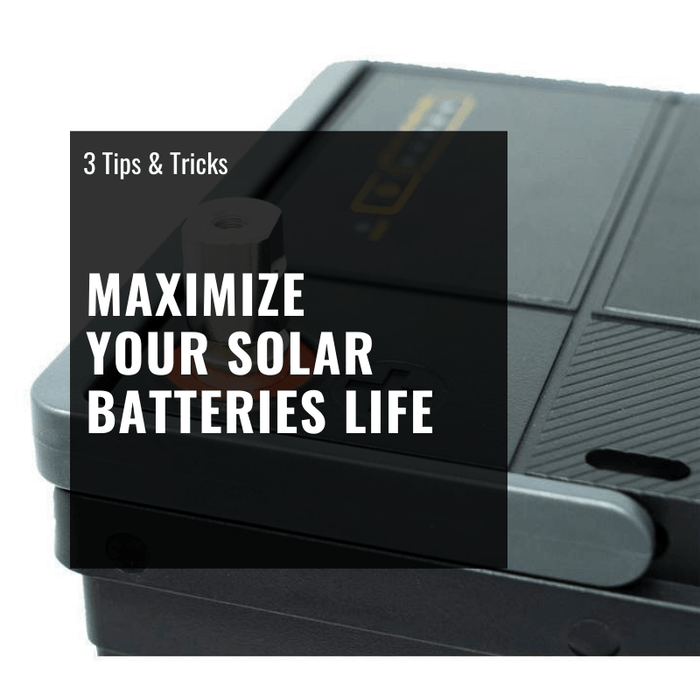
How to Test Solar Panels: Accurately Measuring Solar Panel Output

Table of Contents
Short on Time? Here’s The Article Summary
The article discusses the importance of testing solar panels to accurately measure their power output, which can be influenced by various factors like shading, temperature, and panel direction. Testing helps adjust expectations and optimize panel performance. It explains how to measure amperage and voltage using an amp meter and multimeter, respectively, and how to calculate the panel's power output.
The article also mentions the importance of the power rating given by the manufacturer and recommends purchasing new solar panels or kits if needed. Regular testing ensures panels are generating enough clean energy to meet power needs.
Introduction
How to Test Solar Panels – Accurately Measuring Solar Panel Output
Taking the time to test your solar panels is one of the best ways you can get a true reading of their actual power output. Given that the output and efficiency of your solar panels will have a drastic impact on the overall power capabilities of your solar power system, it makes sense that many people test their solar panels on a fairly regular basis.
If you would like to know how to test solar panels, you have come to the right place! We will explain how you would go about measuring both solar panel amperage and current. We will also explain how you can use a multimeter to test the voltage of your solar panels.

Why is it Important to Test Your Solar Panels?
The power rating of a solar panel is given by the manufacturer and the number simply represents the amount of power that solar panel is capable of producing under the most ideal conditions. However, in reality, solar panels are rarely exposed to ideal conditions for more than a few hours per day.
Solar panel efficiency and power production can differ due to a variety of factors, including the number of peak sun hours in a day, shading issues, the outside temperature, the direction the solar panels are facing, the geographic location of the solar panels, and the particular season when the solar panels are being used.
Testing your solar panels allows you to get an accurate reading of how much solar power they are really generating. Not only would this allow you to adjust your expectations to more accurately reflect the true potential of your solar panels, it will let you know if you need to invest in more solar panels, or simply reposition the ones you are currently using.
Essentially, testing your solar panels will allow you to make sure that they are generating enough power to meet your needs and let you know if you need to reinstall them so you can optimize their performance and get the highest possible amount of solar electricity out of your system.
How to Test Solar Panel Output
To test your solar panels, you will need to perform a fairly simple calculation. Basically, you will need to multiply the volts and amps, as this will give you an accurate total wattage:
Volts x Amps = watts
So, to determine the power that your solar panel is generating, you will need to first measure the amperage and voltage.
Start by Noting the Power Rating:
One of the first things you will want to take note of is the actual power rating of your solar panels. As discussed above, this wattage rating will not necessarily reflect the amount of electricity your solar panels can generate, as plenty of variables can influence performance, but it is still useful information to have, as it will give you an idea of how well your solar panels are performing in relation to their maximum potential.
When solar panels are given a power rating, the number is based off a laboratory test, where the solar panel is exposed to an hour of simulated sunlight that measures 1,000 watts per square meter. During these tests, the solar panels are also kept at a constant temperature of 77 F, as temperature fluctuations can also impact performance.
So, if a solar panel has a power rating of 300W, that means it produced 300 watts of electricity after being tested in ideal conditions. Again, if you were to purchase this same 300W solar panel, it would likely produce less power than this, which is why it is important to test its performance for yourself.
Measure the Solar Panel Amperage:
To measure the amperage of your solar panel, you will need to use what is known as an amp meter. These are fairly affordable devices and they can be purchased at most hardware and automotive stores.
Once you have one, simply attach the meter to the positive and negative terminals of your solar panels. When testing, you will want to make sure that your solar panel is receiving the same amount of sunlight it would under normal conditions, so try not to move it from where it would normally be positioned.
The device will then be able to give you an accurate reading of the solar panel amperage, which you can use for your calculation.
Measure the Solar Panel Current:
To measure the current, you can use a multimeter. Again, these devices are affordable and worth investing in if you are running a solar power system. They can also be found at most hardware and automotive stores.
If you want to make sure you are getting an accurate reading, you will also need to use a variable resistor box. These devices allow you to get readings at different levels of resistance.
Once you have the appropriate tools, you can use the multimeter to test your solar panels by following these steps:
- Locate the junction/converter box, which is usually located at the back of the solar panel. If it has a cover, remove it.
- Locate the positive and negative connectors and make sure you are certain you know the difference. Consult the instruction manual for your solar panel if they are not clearly marked, or if you are unsure that you have correctly identified them.
- Make sure your solar panel is receiving the same amount of sunlight that it normally would.
- Set the multimeter to read DC power. Also set the multimeter to measure a voltage level that is suitable for your solar panel, meaning you will want to set it higher than the voltage rating the solar panel has. This will make sure you can get an accurate rating and the multimeter itself is not interfering.
- Connect the multimeter to the solar panel correctly, meaning the positive and negative clips of the multimeter are connected to the correct connectors.
- Note the voltage reading. Once you have your reading, turn the multimeter off, then you can disconnect the device from your solar panel.
Following the steps above should give you an accurate reading of the solar panel voltage. If you are testing a fairly new solar panel in conditions where it is receiving adequate sunlight, the voltage should be fairly similar to the voltage rating the solar panel had when you purchased it.
Calculating Solar Panel Output:
As mentioned above, you will now want to make a quick calculation to get the power output for your solar panel. Simply use the amperage and voltage readings your earlier tests revealed and perform the following equation: Volts x Amps = watts.
Once you have calculated the real wattage of your solar panels, you can multiply this number by the average hours of sunlight you get per day:
Solar panel watts x average hours of sunlight = daily watt-hours
Most people then take 75% of this total, as it helps account for the fact that the directness of the sunlight will not be consistent throughout the day. Sunlight tends to be at its most powerful and direct in the hours just before and after noon.
Unless you want to get a really accurate reading by testing your solar panels each and every sunny hour of the day, simply performing the test during a peak sun hour and then multiplying your daily watt-hours by 75% should be a fairly decent representation of the output of your solar panel.
Purchasing New Solar Panels
If you are unhappy with the output of your solar panels and you would like to replace them, or if you would simply like to add additional solar panels to your solar power system, we can help.
Our collection of portable solar panels is perfect for those that are in the market for portable solar panels. We carry a wide range of these convenient solar panels from some of the best manufacturers in the solar industry.
We also carry an extensive range of Renogy Solar Panels, Inverters, Solar Batteries, and More. Renogy is one of the more reputable brands in the residential solar power market and they are known for balancing performance with affordability, so the Renogy brand is definitely worth taking a look at if you are planning to upgrade your existing solar power system, or build a completely new one.

If you are looking for a reliable and efficient solar panel at a reasonable price, we highly recommend these 200 watt solar panels.
Solar Panel Kits
For those that are new to solar power, we always recommend starting with a solar panel kit. These convenient and affordable kits come with everything you need to get started. In addition to solar panels, you also get an efficient charge controller, power inverter, a battery or solar generator, and all of the cables and connectors you need to wire everything together.
Final Words
Testing your solar panels on a regular basis will help ensure that they are operating correctly and continuing to generate enough clean solar energy to meet your power needs.
The Ultimate Solar + Storage Blueprint (Mini Course)
Struggling to understand how solar + storage systems actually work? Looking to build or buy your own solar power system one day but not sure what you need? Just looking to learn more about solar, batteries and electricity?
Join 15,000+ solar enthusiasts breaking free from their energy dependence with this short step-by-step video course that will make you a solar + storage expert. Start your journey to energy independence today.
Who is ShopSolar.com?
ShopSolar.com is the #1 digital platform that enables consumers & businesses to source and purchase complete solar + storage solutions direct, saving you thousands in time, energy and money! With over 40,000+ happy customers, we’re on a mission to make solar simple, transparent and affordable.
You should also consider reading these articles:
- What Can You Power with 200 Watt Solar Panel
- How Many Batteries Do I Need for a 200 Watt Solar Panel
- Solar Panels for Home
- Best Solar Panels
- Solar Panel Cost
- Are Solar Panels Worth It
- How Are Solar Panels Rated
- Questions to Ask About Solar Panels
- Best Price Solar Panels per Watt
- Why Are Solar Panels so Expensive
- How to Choose Solar Panels
- Best Solar Panel Kit



Leave a comment